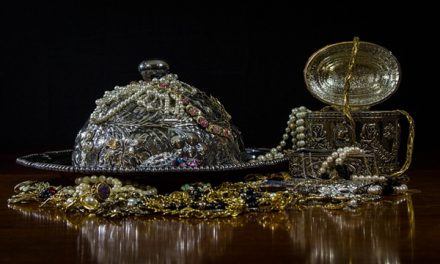When you are looking to roll over your IRA, there are a few things that you need to take into account. One of the most important decisions that you will make is what type of assets you want to roll over into your new IRA. Do you want to invest in stocks and bonds? Different crypto currencies? Real estate? Or maybe physical precious metals ira? If precious metals are your choice, then you need to know about the indirect IRA gold rollover rules.
In this blog post, we will discuss the rules related to direct and indirect IRA rollovers and how long the process usually takes.
What Is a Direct IRA Gold Rollover
A direct rollover of an IRA account is a transfer of assets from one IRA custodian directly to another. IRS rules permit a direct rollover of all types of IRAs, including traditional, Roth, SIMPLE, and SEP IRAs. There are two main reasons why you might want to do a direct rollover: to change IRA custodians or to roll over assets from an employer-sponsored retirement plan into an IRA.
When you do a direct rollover, the IRS allows you to roll over the entire account balance, including any gains or losses. You can also choose to do a partial direct rollover, but there are some restrictions on this. For example, if you have a traditional IRA and you do a partial direct rollover of the account balance into a Roth IRA, you will have to pay taxes on the amount that you Rollover. The IRS also imposes limits on how often you can do a direct rollover. Generally, you are only allowed to do one direct rollover per year. However, there are some exceptions to this rule, such as if you have multiple IRAs or if you are rolling over assets from an employer-sponsored retirement plan into an IRA.
What is an Indirect IRA Rollover
An indirect rollover is a distribution from one IRA that is paid to the taxpayer, who then contributes the assets to another IRA within 60 days. IRS rules allow for only one indirect rollover per 12-month period regardless of the number of IRAs the taxpayer has. An indirect rollover may be appropriate when an IRA owner wants to move assets from one IRA custodian to another but cannot or does not want to do a direct transfer.
There are two key things to remember when considering an indirect rollover: first, the IRS imposes a limit of one indirect rollover per 12-month period; and second, the entire distribution must be redeposited into an IRA within 60 days. If these requirements are not met, the distribution will be taxed as regular income and may be subject to an early withdrawal penalty. When done correctly, however, an indirect rollover can be a helpful tool for consolidating IRAs or moving assets to a new custodian.
Many people who have traditional IRA’s do indirect rollovers to move some of their assets into precious metals. The process for this is very straightforward as you are permitted one indirect rollover per 12-month period and upon receiving the funds from your traditional IRA you have up to 60 days to invest it in a new IRA.
An indirect gold ira rollover allows you to invest in gold without having to pay taxes on the sale. With this type of rollover, you will use a gold ira custodian to hold your gold in an account for you.
This type of rollover is a great way to invest in gold and silver without having to worry about legality on the transaction. Your gold IRA custodian is there to address any and all aspects of the transaction and answer all questions. This service is invaluable towards anyone interested in rolling over their assets into another IRA.
The Benefits of An Indirect Rollover Over a Direct One
When it comes to retirement planning, there are a lot of options to choose from. One of the most popular choices is an IRA or Individual Retirement Account. IRAs come in two main varieties: direct and indirect. Both have their own benefits, but indirect rollovers tend to offer more advantages.
With a direct rollover, the IRA owner transfers the account balance directly to the new trustee. This is simple and straightforward, but it comes with some potential drawbacks. First, the owner may incur taxes and penalties if they don’t complete the rollover within 60 days. Second, there’s always the possibility that the owner will misplace or lose the funds during that 60-day period.
An indirect rollover avoids both of these problems. With an indirect rollover, the IRA owner withdraws the funds from their current IRA and deposits them into a new one within 60 days. Because the owner never actually has possession of the funds, there’s no risk of losing them. And because the funds are deposited into the new IRA within the 60-day window, there’s no risk of incurring taxes or penalties.
There are other benefits of an indirect rollover as well. For example, indirect rollovers allow for more flexibility when it comes to gold investments choice. And because the money never actually leaves the IRA account, there’s no need to worry about re-qualifying for contribution limits or early withdrawal penalties.
Overall, indirect rollovers offer more benefits than direct ones. If you’re considering a rollover for your retirement account, be sure to explore your indirect rollover options.
How Long Does the Entire Process Take, From Start to Finish
If you’re thinking about rolling over your IRA to gold, you may be wondering about the timeline for the entire process. Fortunately, it’s not as complicated as you might think. In most cases, the rollover can be completed within a few weeks.
- The first step is to contact a gold dealer or broker and open an account.
- Once your account is open, you’ll need to instruct your IRA custodian to transfer the funds from your IRA to the new account.
- The custodian will then sell your assets and send the cash to the gold dealer.
- The gold dealer will then purchase the gold and arrange for it to be delivered to a secure storage facility.
Finally, the gold will be custodied in your new account and you’ll be able to start making withdrawals.
While the process may take a few weeks to complete, it’s actually quite simple and straightforward. So if you’re thinking about rolling over your IRA to gold, there’s no need to wait – you can get started today.
What Are the Tax Implications of Rolling Over Your Gold into an IRA?
Gold IRA rollovers are becoming increasingly popular, but there are still many people who are uncertain about the tax implications of such a move. In general, rolling over your gold into an IRA is a very tax-efficient way to invest in precious metals. However, there are a few things you should be aware of before you make the decision to roll over your gold.
First, it’s important to understand that there are two types of IRAs: traditional and Roth. With a traditional IRA, you make contributions with pre-tax dollars and the assets grow tax deferred. With a Roth IRA, you make contributions with after-tax dollars and the assets grow tax-free. So, which type of IRA is best for rolling over your gold?
Generally speaking, a traditional IRA is the better choice for indirect rollovers (where you roll over your gold into an IRA and then reinvest the proceeds into other assets). This is because you will only have to pay taxes on the proceeds when you eventually withdraw them from the account. In contrast, if you roll over your gold into a Roth IRA, you will have to pay taxes on the full value of the gold at the time of the rollover. However, there are some exceptions to this rule – so it’s always best to speak with a tax advisor, gold IRA company, or gold IRA provider before making any decisions.
The bottom line is that rolling over your gold into an IRA can be a very tax-efficient way to invest in precious metals. However, there are a few things you should be aware of before making the decision to roll over your gold. Be sure to speak with a qualified tax advisor to ensure that you understand all of the implications of such a move.
One of the biggest concerns people have when rollover their IRA into a gold IRA is whether or not it is legal. The IRS actually has very specific rules about what types of assets can be held in an IRA, and gold is included on that list. So long as the gold meets certain purity standards, it can be held in an IRA.
Another common concern is whether or not there will be any taxes associated with the rollover. The IRS does not tax IRA rollovers, so long as the rollover is done properly. However, if you take an early distribution from your IRA, you may be subject to taxes and penalties.
Finally, some people are concerned about the costs associated with a gold IRA rollover. While there are some costs associated with setting up a gold IRA, these costs are typically outweighed by the benefits of diversifying your retirement portfolio. Gold has historically been one of the best performing assets, and adding it to your retirement portfolio can help you protect your wealth over the long term
How To Choose a Custodian for Your New IRA Account
When it comes to choosing a custodian for your new gold IRA account, there are a few things to keep in mind.
- First and foremost, you want to make sure that the custodian is reputable and has experience handling IRA accounts. This will ensure that your account is in good hands and that your money is safe.
- Second, you want to make sure that the custodian offers a wide range of investment options. This will give you the ability to diversify your portfolio and maximize your return on investment.
- Finally, you want to make sure that the custodian charges reasonable fees. This will help to keep more of your money in your account and grow over time.
By keeping this gold ira rollover guide in mind, you can be sure to choose the best custodian for your new IRA account. Reputable Gold IRA companies work with custodians that were already approved by IRS. So, you don’t have to worry about choosing the custodian. Just click the button below, choose the gold company that is right for you, and it will help you with your 401K/IRA rollover.





